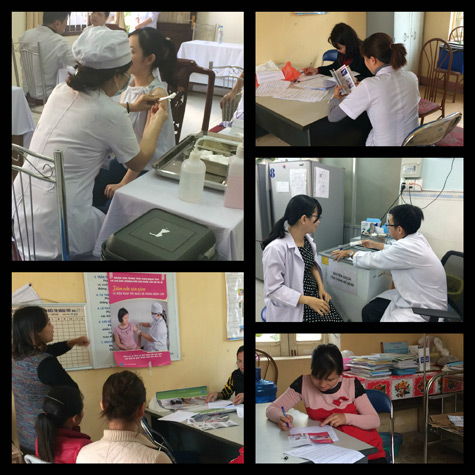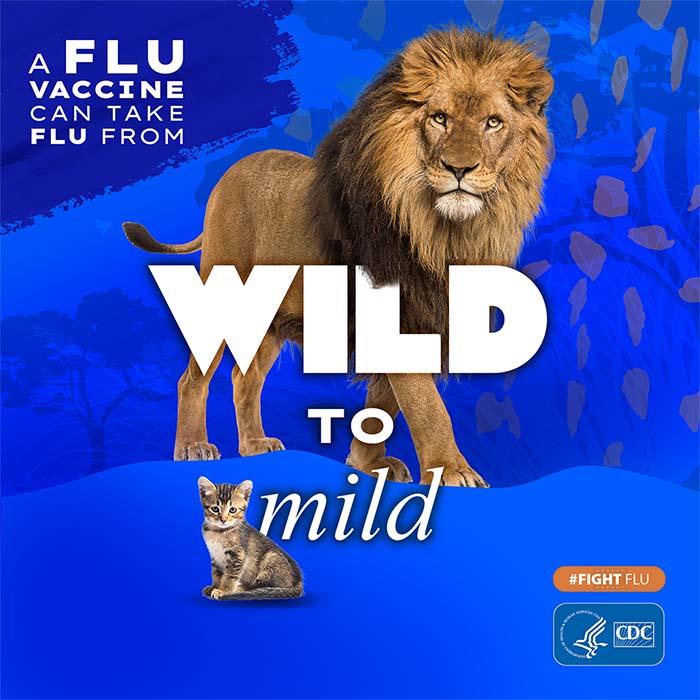Success Story: Vaccination of Health Care Workers in Vietnam with Seasonal Influenza Vaccine
Posted July 10, 2018

July 10, 2018 — Between January and May of 2017, the Ministry of Health of Vietnam (MOHV), with financial and technical support from The Partnership for Influenza Vaccine Introduction (PIVI) and the U.S. Centers for Disease Control and Prevention (CDC), successfully vaccinated nearly 11,000 health care workers with seasonal influenza vaccine in 29 health care facilities throughout the country. The vaccine s were provided by CDC’s Influenza Division (a PIVI partner) through a cooperative agreement with MOHV. Following administration of vaccine, a survey of randomly selected health care workers in 13 of the 29 health care facilities showed that the vaccination program was well received. In addition, monitoring for adverse events following immunization showed that there were no severe side effects. MOHV, with the support of PIVI and CDC, plan to expand immunization of health care workers over the coming years, with the goals of decreasing flu-related illnesses and deaths, and strengthening Vietnam’s pandemic preparedness capacity.
“In 2017, for the first time, we were able to vaccinate health care workers against influenza in Dak Lak province. Thanks to support from the Ministry of Health, the Department of Preventive Medicine and CDC, more than 2,200 health care workers in the province were vaccinated against seasonal influenza. The campaign was a success; there were no [severe] adverse reactions following immunization. This is extremely meaningful for us, because we all understand the importance and benefits of influenza vaccination. For a group like healthcare workers, vaccination is especially important; is the most effective preventive measure we have,” said Dr. Mai Phuoc Loan, Provincial Preventive Medicine Center of Dak Lak Province.
Every year in Vietnam, there are an estimated 3,000 deaths, and surveillance studies show a substantial burden of hospitalizations and illnesses as well, yet less than 1% of the population receives an annual seasonal influenza vaccine. Among health care workers, use of influenza vaccine is higher, but still very low. In one survey, only 7% of physicians reported getting influenza vaccine during the previous year. PIVI, in conjunction with MOHV and CDC, has been working to increase the use of seasonal influenza vaccine in Vietnam. Targeting health care workers for vaccination is an important step. Health care workers can be exposed to influenza in the work place, and if infected, can spread the disease to vulnerable patients. In addition, health care workers play an important role in community education. Once they are vaccinated, they are more likely to advocate on behalf of vaccination to their high-risk patients.
“Health care workers are more likely to be exposed to influenza infection due to their frequent contact with patients. This group of people has relatively good knowledge, understanding vaccine as the best means of preventing seasonal influenza,” said Dr. Nguyen Minh Hang, Deputy Director of the General Department of Preventive Medicine, MOHV. “However, often, this group of people doesn’t take preventative measures themselves. If health care workers are infected, they are more likely to transmit the virus to their patients during close contact with patients in hospitals. Because of this, I strongly support that health care workers be prioritized during influenza vaccination campaigns. Within the framework of the campaign, nearly 11,000 health workers were vaccinated with influenza vaccine during 2017. This not only protected the health of the workers and their patients, but we also believe it will help raise community awareness about influenza and the benefits of seasonal influenza vaccination.”
Vietnam is divided into four health regions, which differ geographically and climatically — North, Central, South and Highlands. For this activity, 20 hospitals and clinics providing clinical care, as well as 9 preventive medicine facilities from across the four regions were recruited. All 15,415 employees in these facilities were eligible to receive influenza vaccine, even those not in direct contact with patients. Informational materials were provided to hospital and department leaders who then explained to their staff where and when the free influenza vaccine would be available. Communication materials, including posters, a brochure, and a video, were developed and made available at entrances, waiting rooms and workers’ areas. Existing vaccination teams were mobilized and trained for this campaign. Detailed logistical planning ensured that vaccine was appropriately stored, handled and transported. Vaccination stations were set up at all 29 facilities so they were easily accessible. Vaccination campaigns were conducted in facilities from one through seven days, with a few facilities vaccination for longer in order to reach more health care workers. MOHV sent teams to monitor the implementation. Some mild adverse events were reported following immunization, such as redness at the injection site (at the expected rate) – with no reported severe reactions.
MOHV conducted a follow-up acceptability survey, asking 1,450 health care workers from 13 selected participating facilities their main reasons for choosing to get – or not get – influenza vaccine during this activity. Over half of the health care workers who got vaccinated feared getting influenza, understood influenza vaccine could prevent illness, and also did not want to potentially infect anyone else (either family or patients). About a third also shared that having colleagues and leadership recommend the vaccine helped convince them. The fact that the vaccine was free was important to about a third of respondents. Among those who did not get vaccinated, about one fourth said they were afraid of side effects. Other less common reasons cited included that they did not have time, did not know where to get it, or did not think the vaccine would protect them. Increasing the quality and frequency of communication and education around the importance of influenza vaccination, as well sharing positive experiences, may help address concerns and sway additional health care workers to get vaccinated.
PIVI will continue to work with MOHV and the CDC to expand the use of seasonal influenza vaccine among health care workers, and other risk groups, as well as engaging the general population.
Health care workers with personal experience receiving influenza vaccine will be true leaders in helping to increase the use of seasonal influenza vaccine as part of the MOHV immunization program – helping to keep more citizens healthy from influenza.
